Decorative allium onion, types, varieties, photos, growing recommendations, application
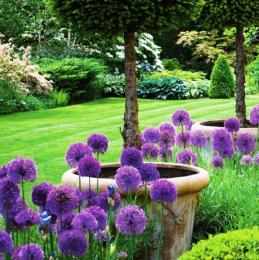
Allary is an area planted with different varieties of onions.
In most cases, decorative allium is used for planting. To create an “onion garden,” it is customary to use at least a dozen different plant varieties.
We invite you to take a closer look at this attractive representative of the flora and the agricultural technology for its cultivation.
Content:
- What is decorative allium onion, description and photo
- Rules for planting and care
- Growing ornamental onions: feeding and watering
- Decorative allium onion: should it be dug up after flowering?
- Bloom
- Possible reasons for lack of flowering
- The use of allium in landscape design
- Is it possible to eat decorative allium onions?
- Reproduction methods
- Diseases and their control
- Popular types and varieties
What is decorative allium onion, photo and description
Allium belongs to bulbous perennial plants. Unfortunately, this representative of the flora is not widespread enough and is not particularly popular among domestic flower growers. And it’s really in vain. Today, botanists count more than seven hundred onions, differing in size, time and duration of flowering, color palette of the flower and its shape.
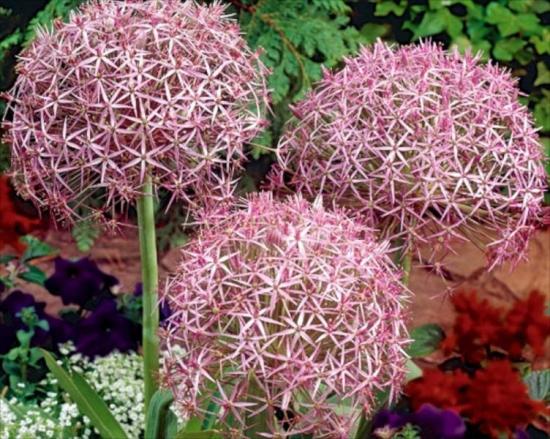
The flowering period is long, about three weeks, but the inflorescences themselves, if not removed at the end of flowering, also look quite picturesque.
Allium flowers decorate the garden, but they are also suitable for cutting, they can be used in summer bouquets or used as dried flowers.
The plant is also attractive because it does not require much space for growth and is an excellent honey plant.
From the name itself it’s easy to guess that it is a close relative of the fairly common onions and garlic that are familiar to us.
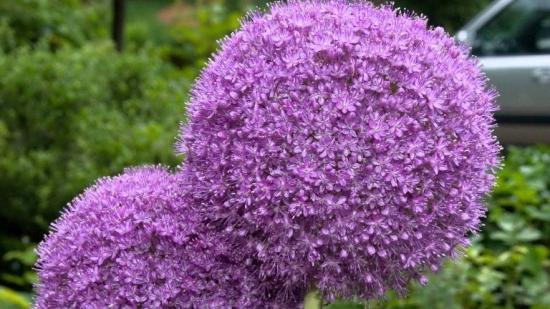
The plant is native to Central Asia; it gained popularity in Europe only from the beginning of the nineteenth century.
The spread of ornamental bulbous crops was facilitated by botanists from the Imperial Botanical Garden of St. Petersburg, who, in fact, collected a collection of the most beautiful representatives of the species and began breeding new varieties.
With the exception of the Schubert and Christophe varieties, alliums are resistant to low temperatures, are not particularly demanding on soil, and withstand drought well.
For planting bulbs, you should choose well-lit areas; the plant will feel much more comfortable, and therefore will have a more decorative appearance.
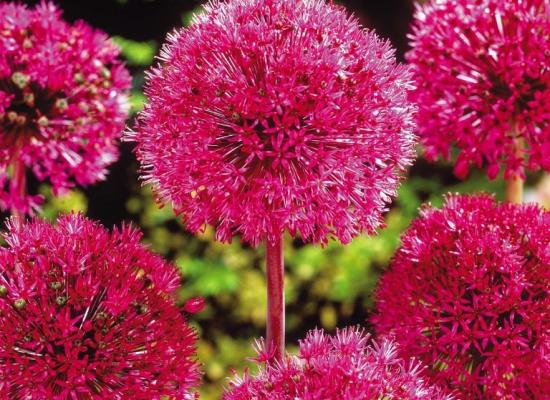
There is no need to dig up the bulbs every year; they can grow in one area for several years.
If desired allium can be grown even in a regular flower pot.
Landing rules
Let's start with the fact that buying decorative allium onion bulbs is not so easy; not every garden center will offer you at least a couple of varieties of this plant.
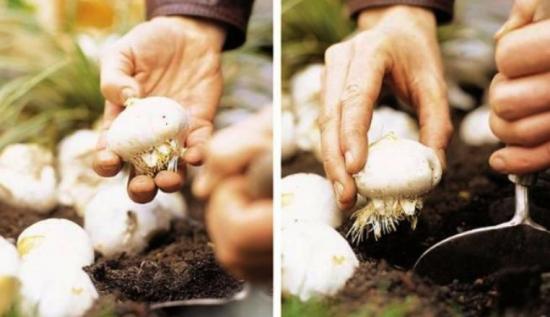
There is a much wider selection in online stores, so in order to save time and money, it’s easier to immediately look for sites offering seeds for planting.
It is advisable to plant onions in the fall. As a last resort, they resort to spring planting.Autumn planting is carried out in September or early October, when the air and soil temperatures drop.
The depth of the holes should be approximately twice as large as the height of the bulbs. The prepared wells are slightly moistened.

On one square meter you can plant up to 50 bulbs of large plants or up to hundreds of small ones.
After planting the bulbs, the area is covered with a thick layer of mulch (peat or humus) and watered abundantly. The formation and growth of roots continues until the soil temperature drops below +3 C.
Feeding and watering
The soil should be fertilized when digging, before planting the bulbs. Fertilizers can be used both mineral and compost. The next feeding of plants is done when loosening the soil in the spring. When choosing a fertilizer, you must remember that the plant is very sensitive to potassium deficiency.
You can also feed the plants during the period of bud formation.
At the very beginning of autumn, the last fertilizing of the season is done: wood ash is added.
Alliums do not need abundant watering; they should be moderate and only done if the soil is very dry.
Watch a video about caring for decorative allium onions:
Decorative allium onion: should it be dug up after flowering?
Since the plant is an ephemeroid, the annual digging procedure is not necessary. You can plan a transplant in 5-7 years. Onions overwinter in open ground, without shelter.
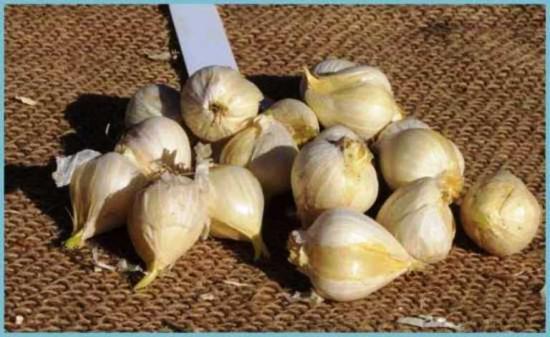
But the weather conditions in a particular area should be taken into account: too rainy and cool autumn can cause the development of putrefactive processes in the bulbs. In such cases, it would be rational to dig up the bulbs, dry them and plant them in the ground.
It is recommended to remove the bulbs from the soil after the leaves have completely withered. If the second half of summer is dry and warm, then it is better not to touch the bulbs.
Allium bloom
Flowering of almost all varieties begins in May, more precisely - in the second half of the month. The inflorescences themselves look quite attractive and can have different sizes and colors. The diameter of the inflorescence of the largest of the decorative onions reaches 20 cm in diameter.
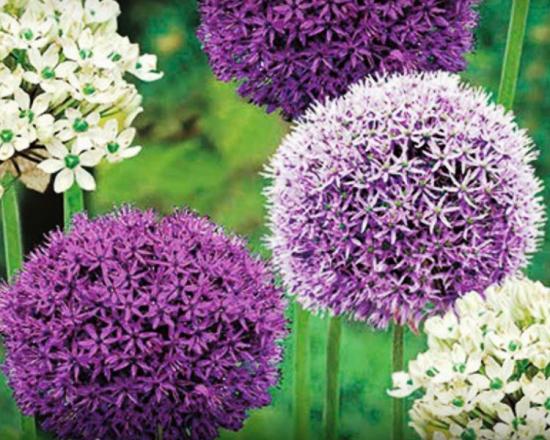
The duration of flowering for each variety is different, from a couple of weeks to two months. When choosing planting material, you should take into account that the flowering of some varieties, for example, Allium pulchellum, begins in August.
Possible reasons for lack of flowering
Complaints about the lack of flowering onions can be heard very rarely; even novice gardeners can grow a beautifully flowering plant.
However, the cases are different, for example, there may be no flowering:
- in case of incorrect landing;
- for the reason that it is too young;
- when planting in wetlands;
- with severe freezing in winter.
It will also not be possible to obtain abundant flowering with excessive watering.
The use of allium in landscape design
Different varieties of onions are used to create green compositions that decorate city streets, parks, and garden plots. This plant fits perfectly into pictures of rockeries and alpine hills, stone gardens, it can be planted as border plantings, in group flower arrangements.
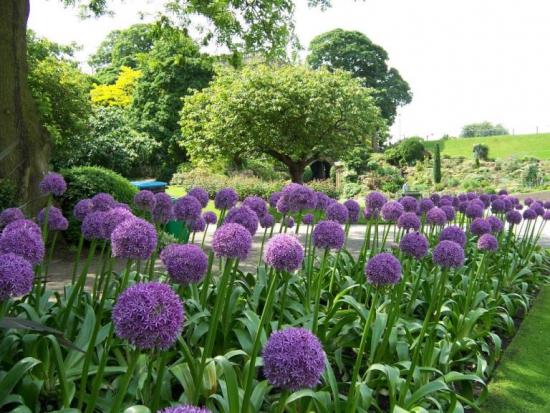
When choosing varieties, take into account the flowering period of plants:
- early flowering;
- average flowering period;
- late bloomers.
It is also important to know the height of the plants:
- tall, peduncle length from 80 cm;
- medium-sized, peduncle from 40 to 80 cm;
- short - up to 40 cm.
When planning the planting of ornamental onions, it should be taken into account that the first, basal leaves of the plants quickly turn yellow, and naturally, the attractiveness of the plant decreases. To preserve the decorativeness of the flower bed, other low-growing plants should be positioned so that they cover the allium’s stem.

As for the arrangement of the plants themselves, dwarf varieties of allium look more impressive when planted in groups; tall ones can be planted either in groups or one at a time.
As companion plants, geranium, decorative poppy, hosta, herbaceous peony, irises, and mantle can be planted next to onions.
We invite you to watch an interesting video about the varieties and use of decorative onions:
Is it possible to eat decorative allium onions?
Even from the name of the plant one can assume that it is largely decorative. The leaves and bulbs have a fairly pronounced aroma and original taste. Besides. All parts of the plant have healing properties.
Onion leaves can be added in small quantities to spring salads, but the period of edibility of the leaves is limited, it ends with the beginning of the formation of the peduncle. Leaves from the flowering plant are not recommended for consumption.
The bulbs are used for baking and pickling, but they should not be consumed in large quantities; one must take into account the rather high risk of developing an allergic reaction.
The beneficial properties of allium are due to its high content of vitamin C, vitamins E and D. Traditional medicine suggests the use of the product as a means for the prevention of cancer, a general strengthening and immune booster.
Moderate consumption of onions:
- has a beneficial effect on the blood vessels of the brain, relieves spasms;
- helps improve vision;
- cures gastrointestinal diseases;
- helps fight colds;
- onion juice accelerates hair growth.
But taking a large amount of the product (more than 3 g per day) can cause allergies and even poisoning.
Reproduction methods
You can increase the number of plants in two ways: by sowing seeds or vegetatively.
Seeds can be sown in spring or autumn, picking is done directly into the beds; it is recommended to choose areas well lit by the sun.
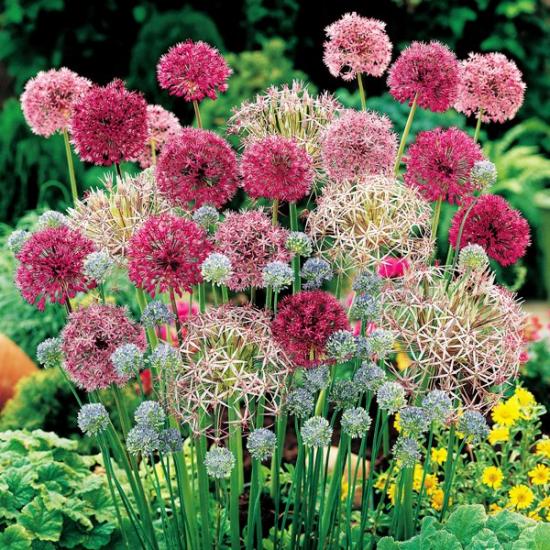
Some types of onions, such as giant and stalked ones, germinate only when sown in winter.
Flowering of varieties such as anzura and wild garlic will begin only in the 4-7th year of the plant’s life; by this age, the bulbs will have gained the weight necessary for the reproductive process.
The vegetative method involves planting children that are formed on the mother's bulb.
To propagate rhizomatous species, dividing bushes is used.
Diseases and their control
Diseases and pests extremely rarely have a negative impact on the condition of bulbous plantings. The pungent odor repels harmful insects and rodents. Of the diseases, the most dangerous is rot; the underground part of the plant can suffer from it if there is excessive soil moisture.
Failure to follow care recommendations, in particular excessive soil moisture, can lead to downy mildew or various types of rot. Onion fly or root mite can also cause damage to the plant.
Preventive measures include:
- warming up the bulbs before planting for 10 hours at a temperature within +40 C;
- treating affected plants with a 2 percent chlorophos solution;
- mulching with peat;
- pollination of the plant with wood ash or tobacco dust.
The most popular varieties of decorative onions
We indicate the most popular types and varieties of allium in the table.
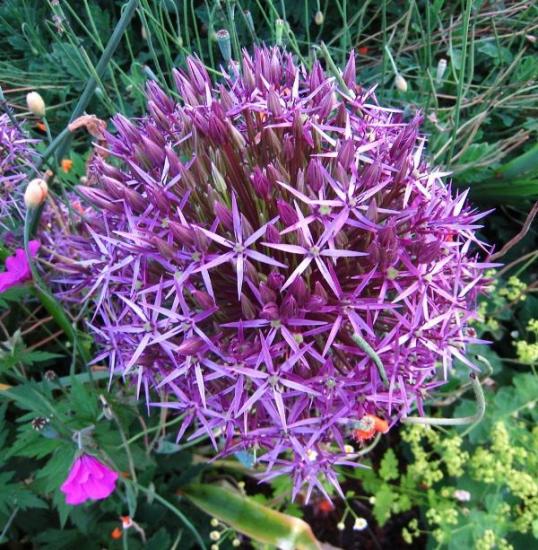
| Aflatunsky | Tall, peduncle up to 150 cm, inflorescence diameter up to 12 cm. Flowers are pale purple, star-shaped. |
| Gladiator | Considered edible. A close relative of the regular onion. Height - up to 100cm. The color of the inflorescences is blue-lavender. The diameter of the inflorescences can exceed 20 cm. |
| Eros | The bushes are low, 30-35 cm. The color of the inflorescences is from pink to lilac, the diameter of the inflorescence is up to 10 cm. |
| Roundhead | The height of the bushes is up to 60 cm, the inflorescences are oval, pink or purple. Flowering lasts up to four weeks. |
| Blue | The height of the bushes is up to 80 cm, the inflorescences reach 7 cm in diameter, the color of the flowers is bright blue. |
| Yellow, or moth | Low growing, up to 30 cm in height. The inflorescences are not dense, golden in color, flowering lasts 3 weeks. |
| Christophe | Medium height, up to 40 cm in height. Has high decorative qualities. The diameter of the inflorescences is about 25 cm, the color is purple or violet. Flowering lasts about a month. |
| Ostrovsky | Low-growing, the height of the bush is up to 20 cm. The diameter of the inflorescence can reach 10 cm, the color of the flowers is crimson |
| Ivory Queen | The height of the bushes is 25-30 cm. The inflorescences are ivory-colored, up to 12 cm in diameter. It has a very pleasant, rich aroma. The leaves are corrugated, green with a lilac tint. Flowering duration - 3 weeks |
| Giant | The height of the peduncle is approximately 150 cm. The inflorescences are umbrella-shaped, up to 8 cm in diameter, lilac in color. Blooms in June for a month. |
| Kovani | Early flowering, peduncles up to 40 cm long, lush, snow-white inflorescences. Flowering duration is more than 3 weeks. |
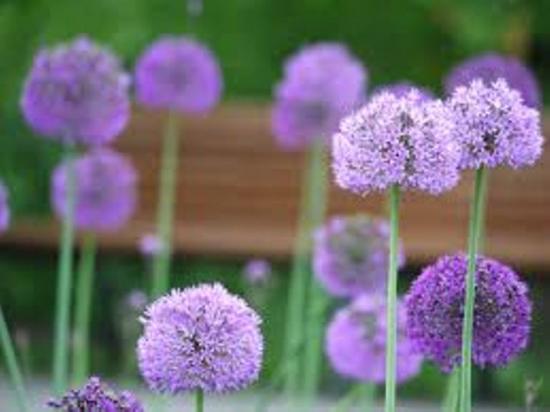
Growing ornamental allium onions is not that difficult a task. But only proper care will allow you to get beautiful long-lasting flowering.

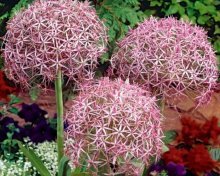
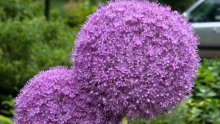
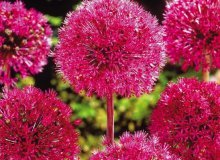
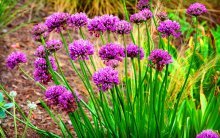
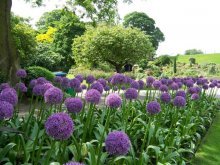
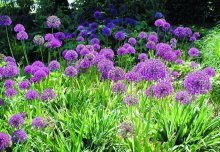
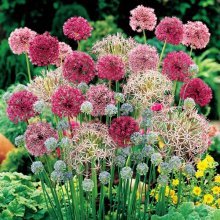
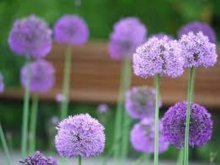
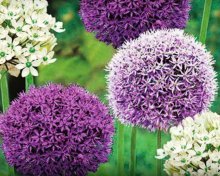
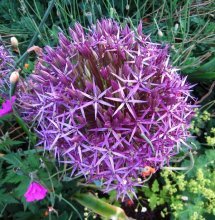
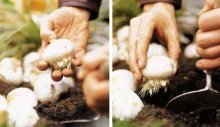
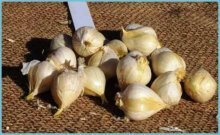
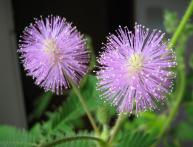
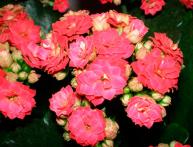
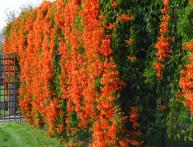
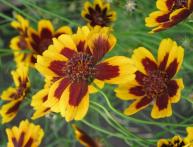
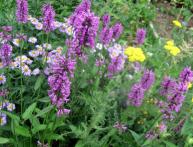
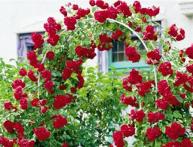
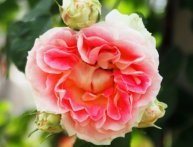
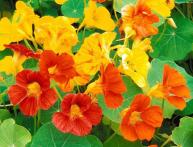
Comments
Decorative onions bloom very beautifully, so that there are always flowers in the flowerbed, it is better to select varieties with different flowering periods. In addition, blooming onions, with different color shades, look much better in a flower bed.
When I first saw this plant, I didn’t immediately realize that it was an onion. Now I am planting varieties of blue and purple shades in the garden. These colored balls seem to add magic. They look very interesting.